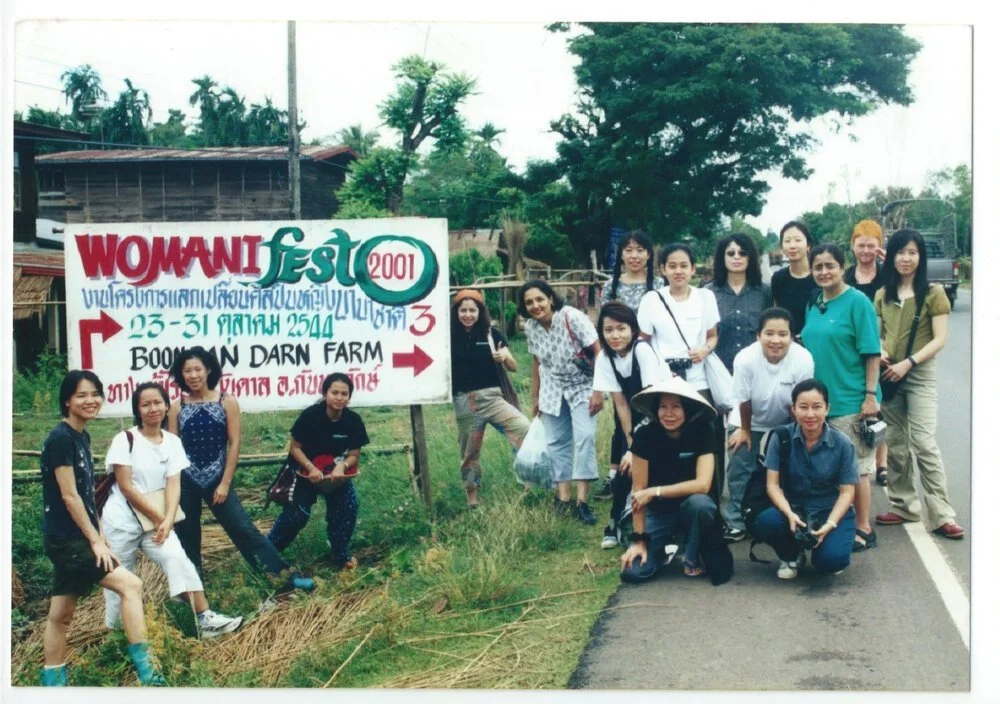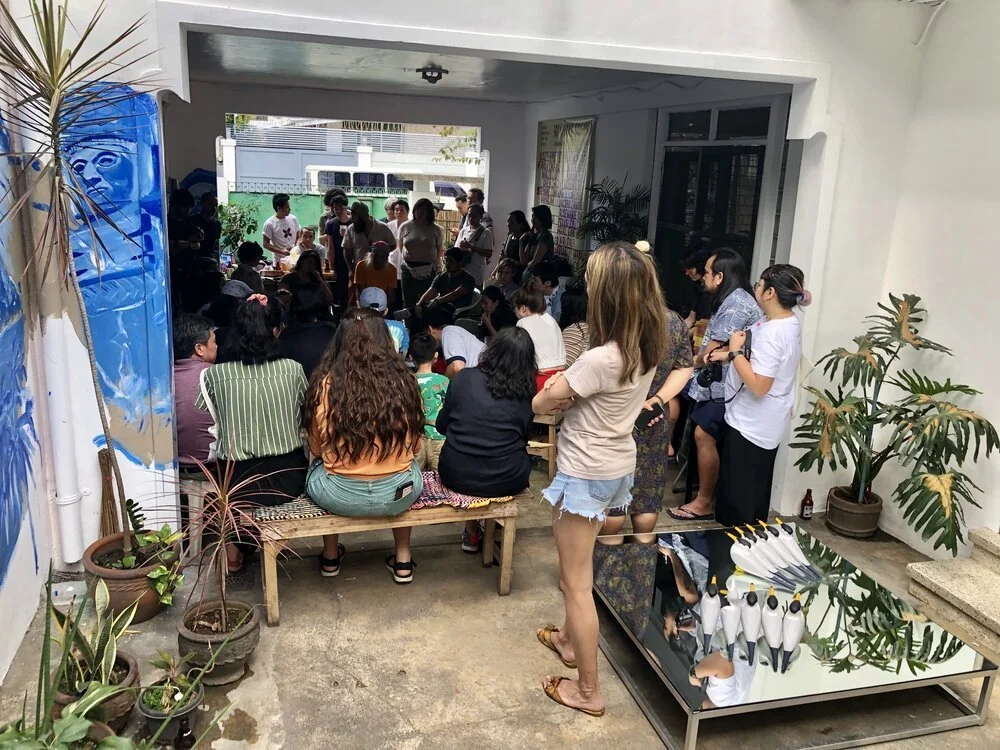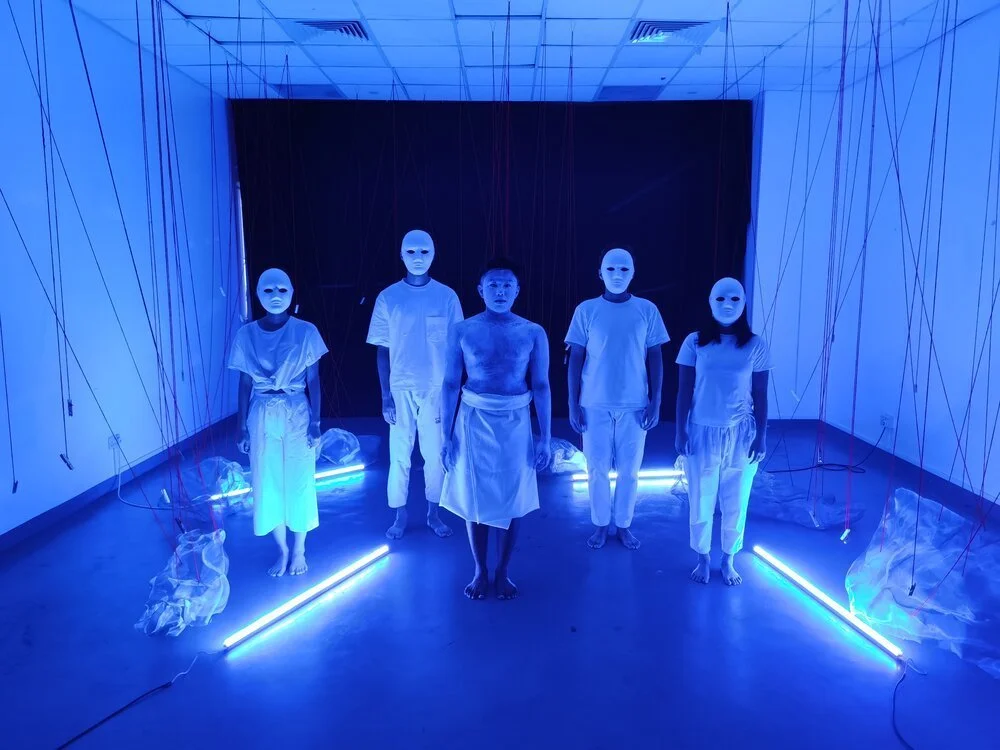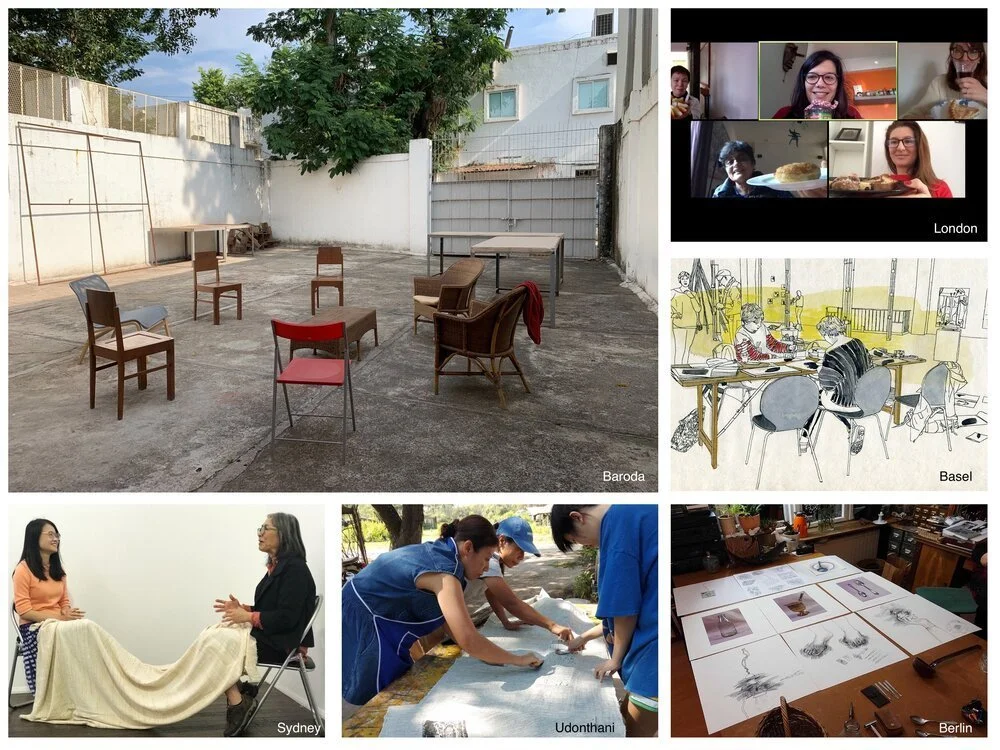The Rise of Alternative Art Biennials
Womanifesto, Bangkok Biennial, Kamias Triennial, Power Play SG
This is Part 2 of a story on biennials. Part 1, How Can Art Biennials Continue to be Relevant?, explored criticisms against the dominant biennial model and how it can continue to add value to the art world. Part 2 will centre on the growth of independent and alternative biennials in Southeast Asia.
Womanifesto Workshop 2001, group two. Image courtesy of Womanifesto.
Exhibitions and festivals that call themselves biennials have been steadily turning up, yet they steer away from the standard paradigms of this exhibition-making format. Defining characteristics of this format include a large-scale presentation happening once every two to three years, a usually international artist line-up, and being strongly funded by a public or private entity with vested interests. Other than co-opting the term “biennial”, however, these independent operations are radically different from what one would expect of such an event. Instead, they are typically ground-up initiatives, self-organised, and positioned as a way to reimagine biennials. Along these lines, the organisers are critical voices against the ongoing trend of “biennialisation”, or the worldwide, rapid increase of this exhibitionary format.
A productive outcome of being independently organised is the ability to metamorphose as needed. This is particularly evident from the many permutations of Womanifesto, a feminist biannual event in Thailand that was founded in 1997 by Nitaya Ueareeworakul and Varsha Nair. Thus far, it has manifested as an exhibition, a residency, and even a website. Nair says, “Way before biennials became a thing, Womanifesto successfully became and remained as a long-term platform where many from across the world could present.” Following this train of thought, the platform could adapt to the aspirations of each specific edition in a fluid manner, rather than subscribing to the common characteristics of the biennial.
As for the Bangkok Biennial, established in 2018 by Liam Morgan, Unchalee Anantawat and Jeff Gompertz, a distinctive aspect is how its participants produce their own autonomous pavilions however they wish. “The goal has been to disperse all aspects of organising such a large-scale event and to remove the “gatekeeper” of central curation as much as possible,” says Morgan. “This results in diversity within the biennial, not only in the art shown, but also of curatorial and organisational models.”
FLEX Talks hosted by Load Na Dito, 3rd Kamias Triennial. Image courtesy of Kamias Special Projects.
Yet another event that adapts from the idea of a biennial is the Kamias Triennial in the Philippines. Founded by the Kamias Special Projects (KSP) collective in 2014, they describe the Triennial as a domestic-scale occurrence. “The term “domestic scale” stems from the local context of Quezon City where much of artist-run culture happens within domestic spaces like apartments, houses or garages,” KSP member Patrick Cruz explains. “It’s possible to braid something intimate within an international scale. The word “international” seems to express something massive and monumental, but it could also just mean that participants and contributors come from a diverse context.” Such instances exemplify how these groups actively reinterpret conventional understandings to spur novel practices.
These alternative methods express the precise intentions of its organisers. Take for example the Bangkok Biennial, where the founders are steadfast in their vision of a decentralised mode of operation and a non-hierarchical system. Morgan says, “We started this as an experimental model to explore how a biennial could exist without the trappings of the dominant system. In the context of Bangkok’s political landscape in 2017, we decided that having any kind of organisation which paralleled the autocratic system in any way is unnecessary, uninteresting and unproductive.”
Talk-Talk-Vilion at Bangkok Biennial 2020. Image courtesy of Talk-Talk-Vilion.
In the instance of the Kamias Triennial, its founders work on an intimate scale and scope so as to encourage informal, open-ended participation for experimental intellectual and creative work. Borne out of critique for the structure of biennials and the domestic art market in the early 2000s, Cruz says, “What I am interested in is using the same spirit of gathering and connecting disparate art communities across continents. For me, the gesture to connect divergent artistic ecologies is more engaging and productive.” Organisers of such events act as provocateurs through subverting the normal expectations of a biennial, and offering up their own propositions for conceptualising such a showcase.
At the same time, being independently run requires extensive efforts when it comes to logistical resources, such as funding, manpower, administration and more. These matters are crucial when it comes to the sustainability of such affairs, particularly when they are due to run regularly. In the case of the Bangkok Biennial, there are no central fund sources. Rather, self-organising pavilion owners seek out their own funding using the biennial’s name for leverage. Yet, even without the weight of having to raise capital for production, the team still faces certain limitations. They are run solely by volunteers to cover all aspects, including graphic design, press relations and media. Because of this, putting up the event moves slowly as much is reliant on the availability and capacity of its volunteers.
Arrvinraj Balasubramaniam, The Blue That Casts on Suspending Realm, 2020, presented at Power Play SG. Image courtesy of the artist.
For Power Play SG, an independent biennial festival which launched its first edition in 2020, working with a small team comprising Curatorial Director Jaxton Su, Artistic Director A'shua Imran and Programmes Director Jireh Koh proved to be a tedious task. Moving forward, they are already looking to reorganise and expand on this core team to ensure a more sustainable manpower distribution. Reflecting on their inaugural festival, Su says, “The key takeaway would be the need to be flexible, resourceful and open to last minute changes.” In general, adaptability and creativity are required to get such events off the ground.
Womanifesto 2020, Gatherings. Image courtesy of Womanifesto.
But even as such independent biennials face a certain precarity on this front, their experimental models for organising art is an invaluable element in contributing to a more spirited art ecosystem, and it is worthwhile to generate an accessible archive for posterity. This is the case for Womanifesto, which took a pause in 2008 due to the external commitments of its co-founders as well as funding issues. After a decade, the team started to work on a proper archive that eventually found its way to the Research Collection of the Asia Art Archive. Such documentation is vital for diversity in the creative production and knowledge circulation by future generations of cultural practitioners. Womanifesto’s co-founders also recently produced Womanifesto 2020: Gatherings, where two to five artists convened in their local contexts across five different countries. This provides a hopeful outlook given that it demonstrates the endurance of such events, notwithstanding its extended pause.
“These events provide a robust alternative voice in the art world, giving way to a plurality of discourses and filling the crucial gaps in their own art ecosystems.”
Across all these alternative biennials, the most exciting aspect is the potential for them to flexibly experiment when it comes to content and structure, so as to suit the urgent concerns of their contexts and circumstances. As independent entities, they have a greater degree of freedom in the conceptualisation and execution of each edition. These events provide a robust alternative voice in the art world, giving way to a plurality of discourses and filling the crucial gaps in their own art ecosystems.
Click here to read part 1 of this story, How Can Art Biennials Continue to be Relevant? which explored criticisms against the dominant model as well as how they can continue to add value to the art world.





